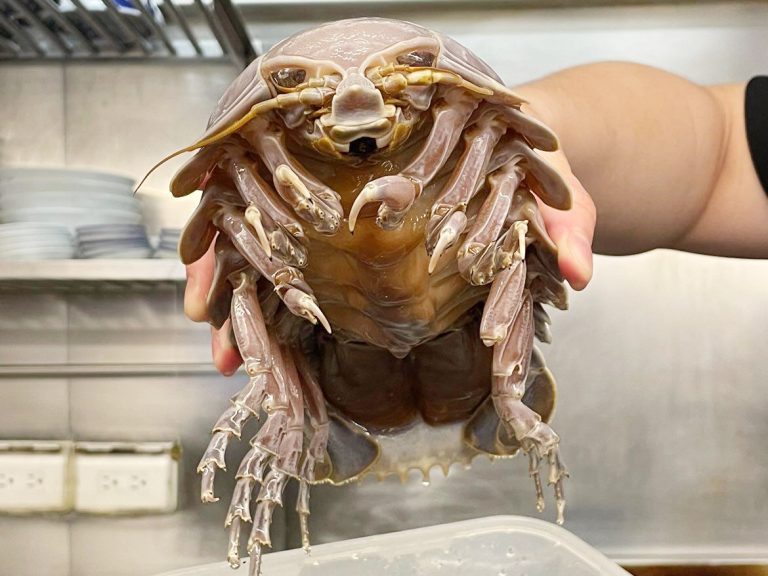27-5-2023 (TAIPEI) A scholar specializing in the study of giant isopods (Bathynomus) has issued a cautionary statement regarding the consumption of these crustaceans after a restaurant misidentified the species. The warning stems from concerns over the potential presence of heavy metals and other toxins in the creatures. The issue came to light when a ramen restaurant, The Ramen Boy, introduced a new flavor called “Giant Isopod with Creamy Chicken Broth Ramen,” leading to public backlash.
Huang Ming-chih, an associate professor in the Department of Biological Sciences and Technology at the National University of Tainan, explained that while the crustaceans are indeed members of the Bathynomus genus, they are not Bathynomus giganteus as claimed by the restaurant, but rather Bathynomus jamesi. Huang, who has dedicated over half a decade to studying giant isopods, clarified that Bathynomus giganteus is known to inhabit only the Gulf of Mexico. Given that the specimens were allegedly caught near the Dongsha Islands, they should be identified as Bathynomus jamesi. Huang suggested that a translation misunderstanding involving a Japanese aquarium might have led to the misidentification. It is worth noting that Bathynomus jamesi was only registered in Taiwan last year.
Huang emphasized that giant isopods feed on the carcasses of marine organisms, resulting in highly odorous digestive tracts. Therefore, caution should be exercised when consuming them. While they have been consumed in areas like Ruifang and Keelung since the 1970s, Huang stressed the importance of careful inspection for safety reasons. Potential risks include residues of pufferfish poison and paralytic shellfish poison. Furthermore, as benthic animals residing on the sea floor, there is a possibility that they have absorbed heavy metals.
Although no reports of food poisoning related to giant isopod consumption have emerged, Huang recommended that the government conduct further testing to discern the differences between the two species of giant isopods and assess their safety for consumption.
Huang noted that Bathynomus giganteus has straighter spines on the pleotelson (tail) compared to the taller spines of Bathynomus jamesi. However, distinguishing between the two based on appearance alone is challenging, as the number of spines varies. Genetic testing is the only definitive method to differentiate between the species.




